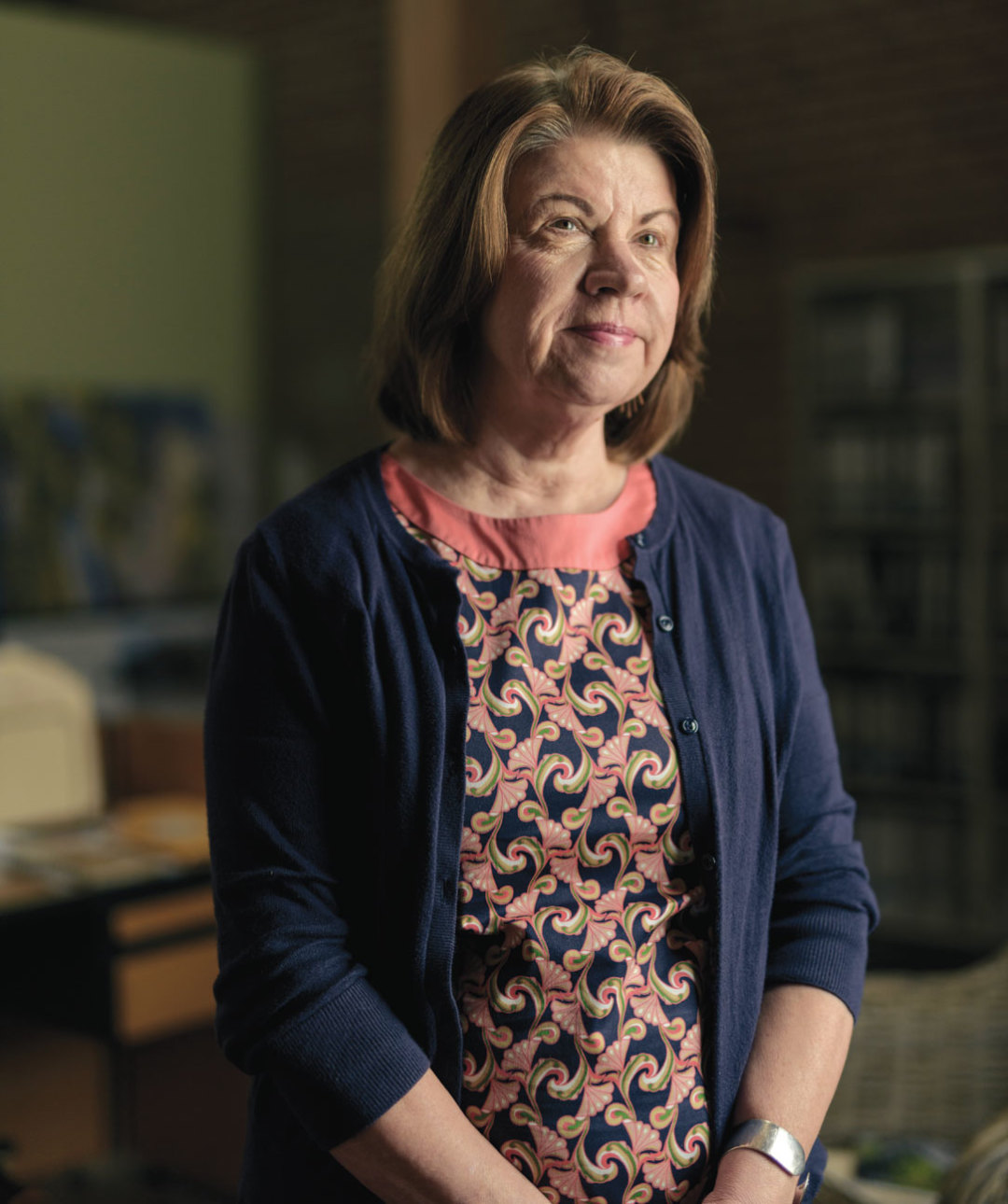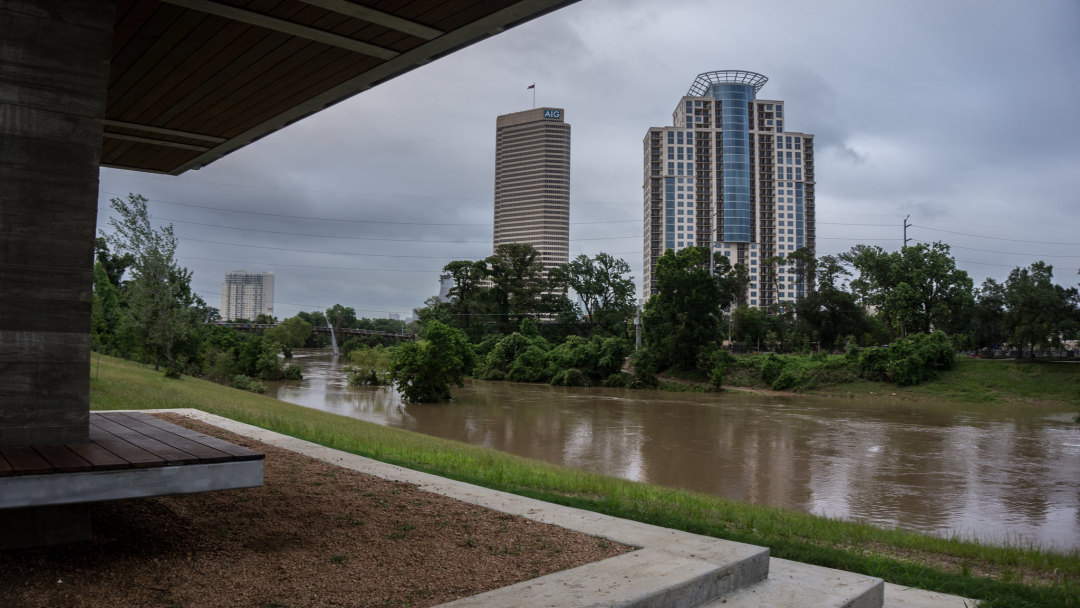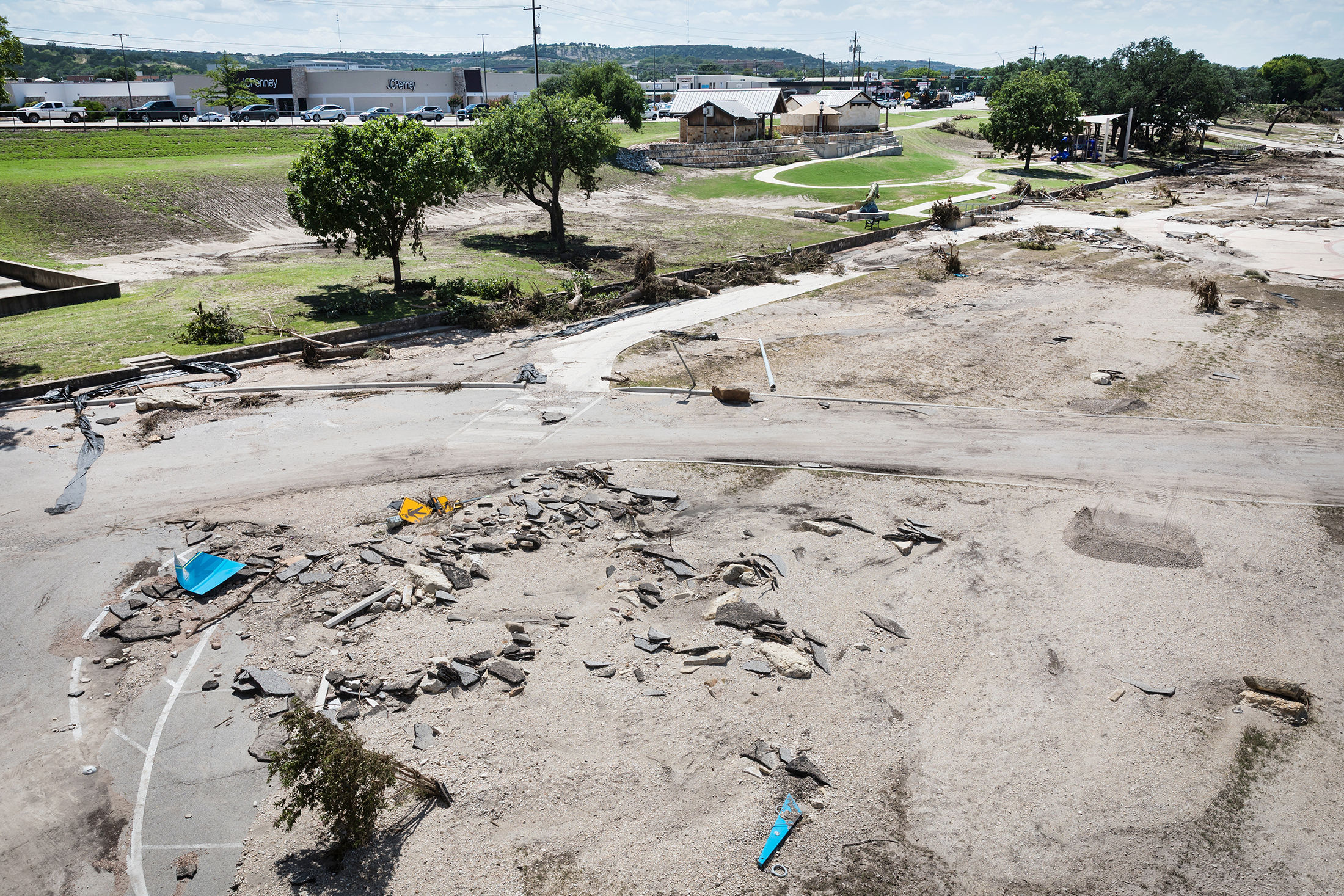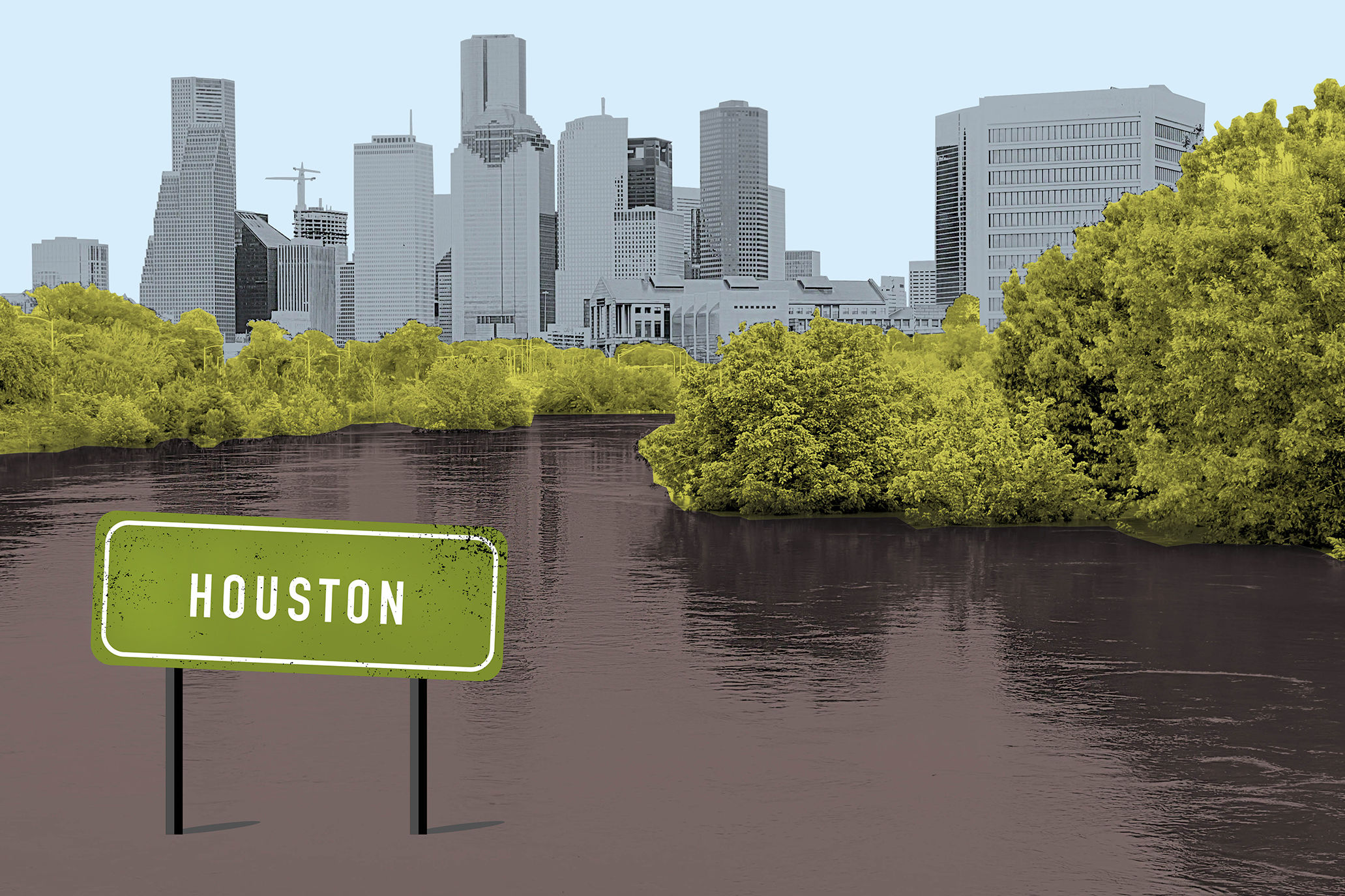The Tide Turns on Buffalo Bayou

Anne Olson, president of the Buffalo Bayou Partnership
Image: Max Burkhalter
The words were on everyone’s lips: Buffalo. Bayou. Park. People wondered if we’d seen it, what we thought of the landscaping, the blue and white ribbons of light, the pedestrian bridges, the artwork. “Are we still in Houston?” asked a dumbfounded coworker, feasting her eyes on the 160-acre greenspace while whizzing down Memorial Dr. “I mean, look at this.” At least one member of our set had taken to calling it Houston’s Central Park.
Our excitement only increased when we heard about the opening festivities for the $58 million project, planned for June. The years of fundraising and construction were at last coming to an end, and happily: our new park was already attracting national attention. The moment seemed right for Anne Olson, president of the Buffalo Bayou Partnership, to take a victory lap, or at least have a chat with us over a beer at the West Alabama Ice House. Would May 26 work, we ventured? It would.
On May 25, it rained. And rained. Eleven inches in just six hours. Homes and businesses were flooded, thousands of cars were abandoned, many destroyed. Memorial Dr. was completely submerged, bayous overflowed their banks, and by the next morning our city had been turned into a chocolate milk Venice. The future of Buffalo Bayou Park seemed very much in doubt, its opening postponed, our interview with Olson canceled.
A bit more than a week later, as we sat watching Olson calmly sip a Dos Equis at the ice house, she seemed to us the consummate Houstonian—undaunted, unfazed, un-spilled-milk and from upstate New York. She’d lived here, however, since the ’80s, and had been with the Partnership since 1995.

Looking west across the high waters of Buffalo Bayou following the Memorial Day floods. | Photo via Flickr user thatlostdog-- under Creative Commons license
“You know, people say, ‘Omigod, was the park trashed? Was it decimated?’” Olson told us, her face unperturbed. “Well, everything we have ever designed—the trash receptacles, the benches, the light fixtures—was designed to withstand a lot of water. Lots of times with the water comes huge logs and grocery carts and—you name it—it will come down and hit something. So all the benches are bolted in, and the trash receptacles and the light fixtures were specially designed to be buried very deep down in the ground.”
Of the affected landscaping, “some areas look a little bit disheveled, but they’re going to come back,” Olson said simply, informing us that the park’s perennial gardens had been planted on higher ground, near the visitors’ center, which didn’t take on any water. Then again, three footpaths for walkers and joggers had been destroyed (“the water sat there so long and then went down so quickly, they just collapsed”) and no one had even tried to turn on the lights yet.
Oh, and then there was all the mud. While Olson’s team had gotten rid of a good portion of it, the rest had hardened into great cakes and would need to be washed away by hand. Still, the park was recovering quickly, she promised. A new fall opening was in the works, and Olson was quietly confident that Houston would get its Central Park once and for all.
“We are happy,” she said, taking a last sip of beer. “In a way the fact that the flood came sort of early is a good test.”




